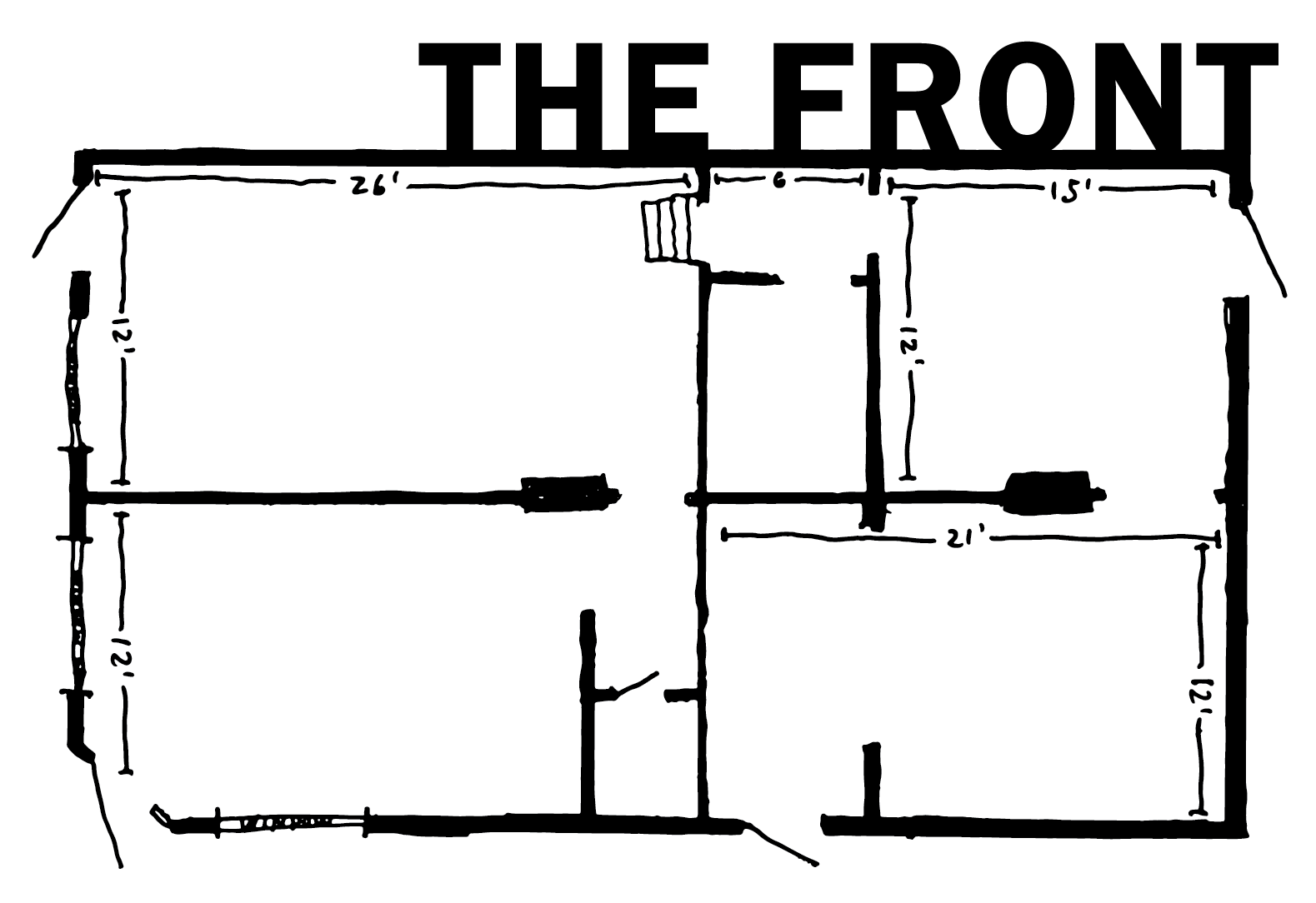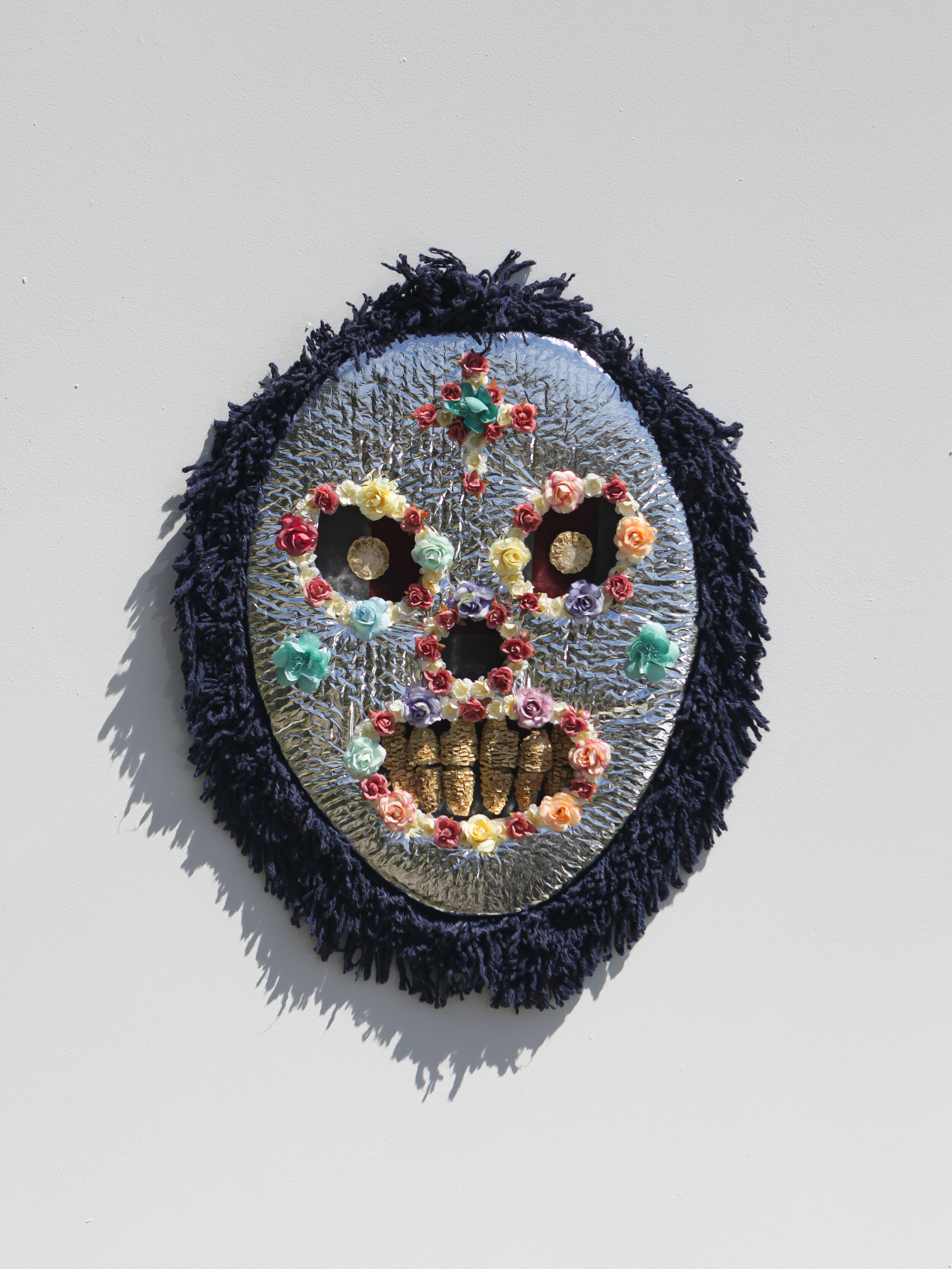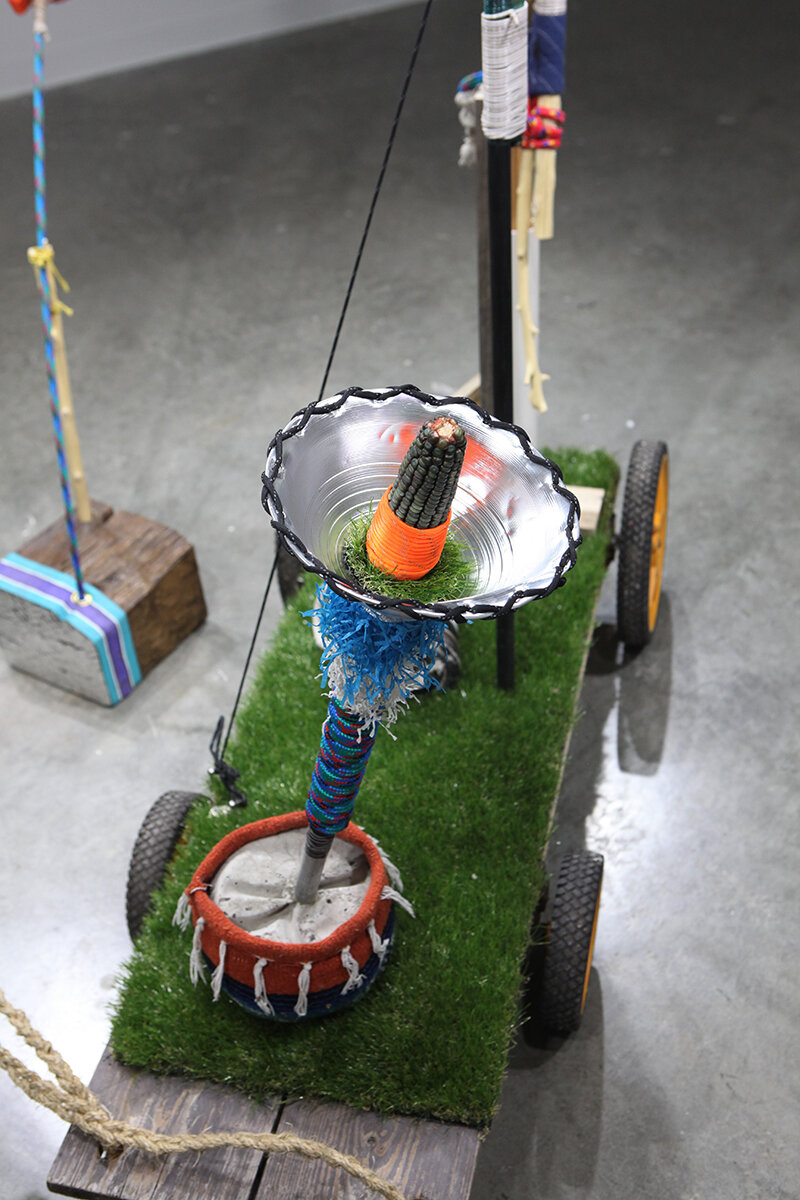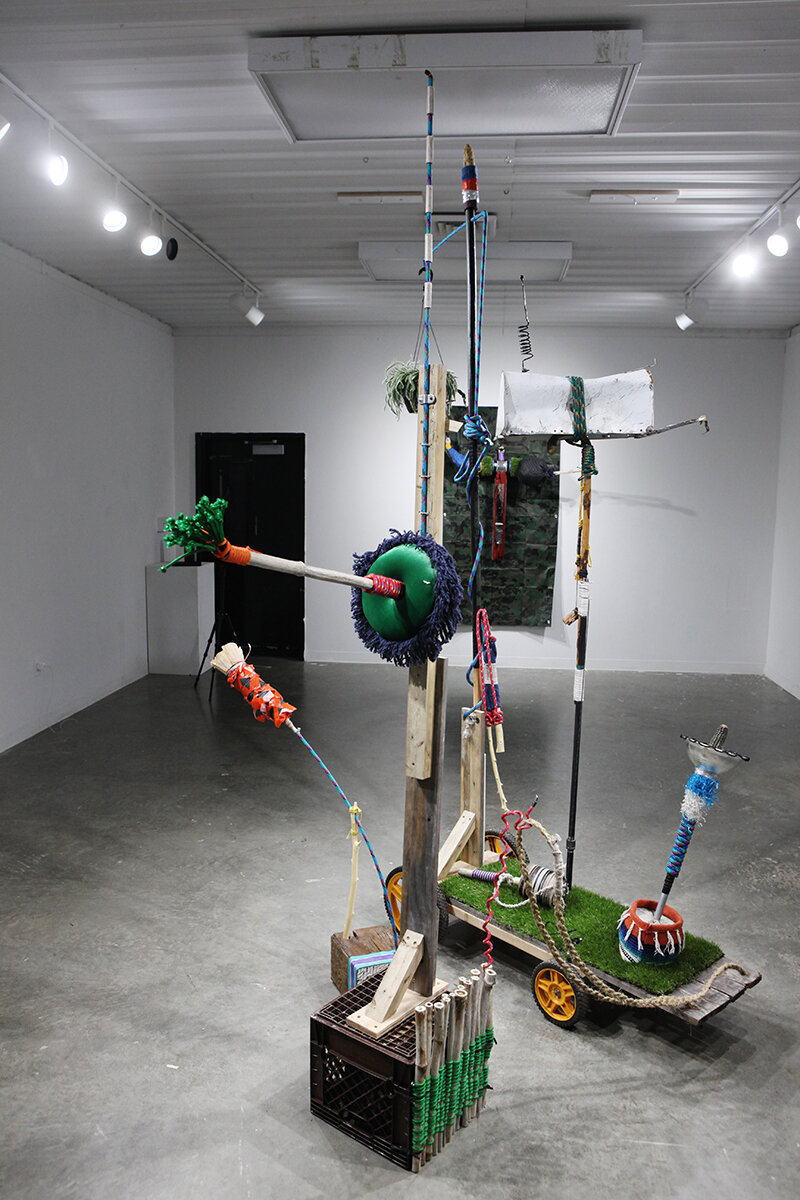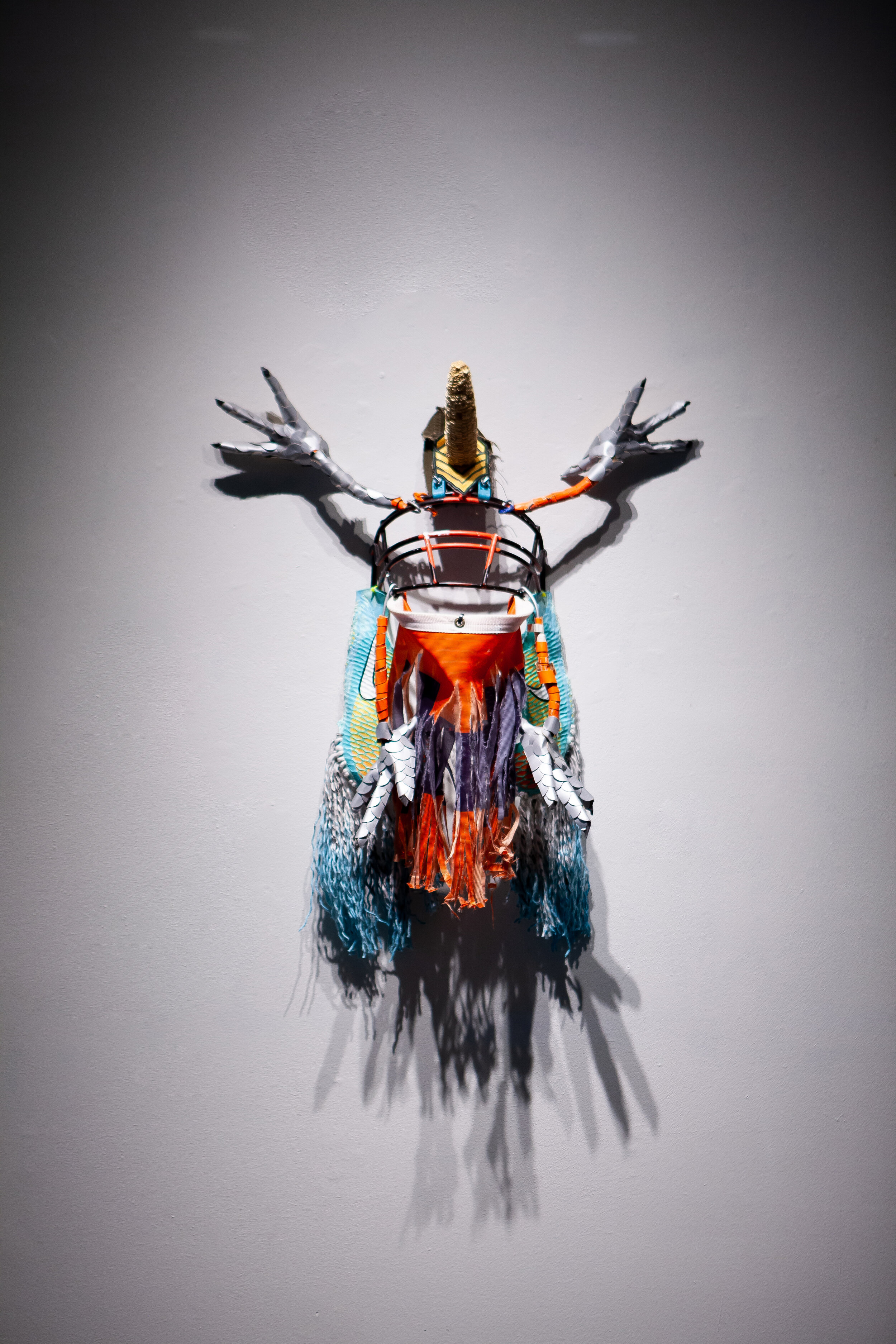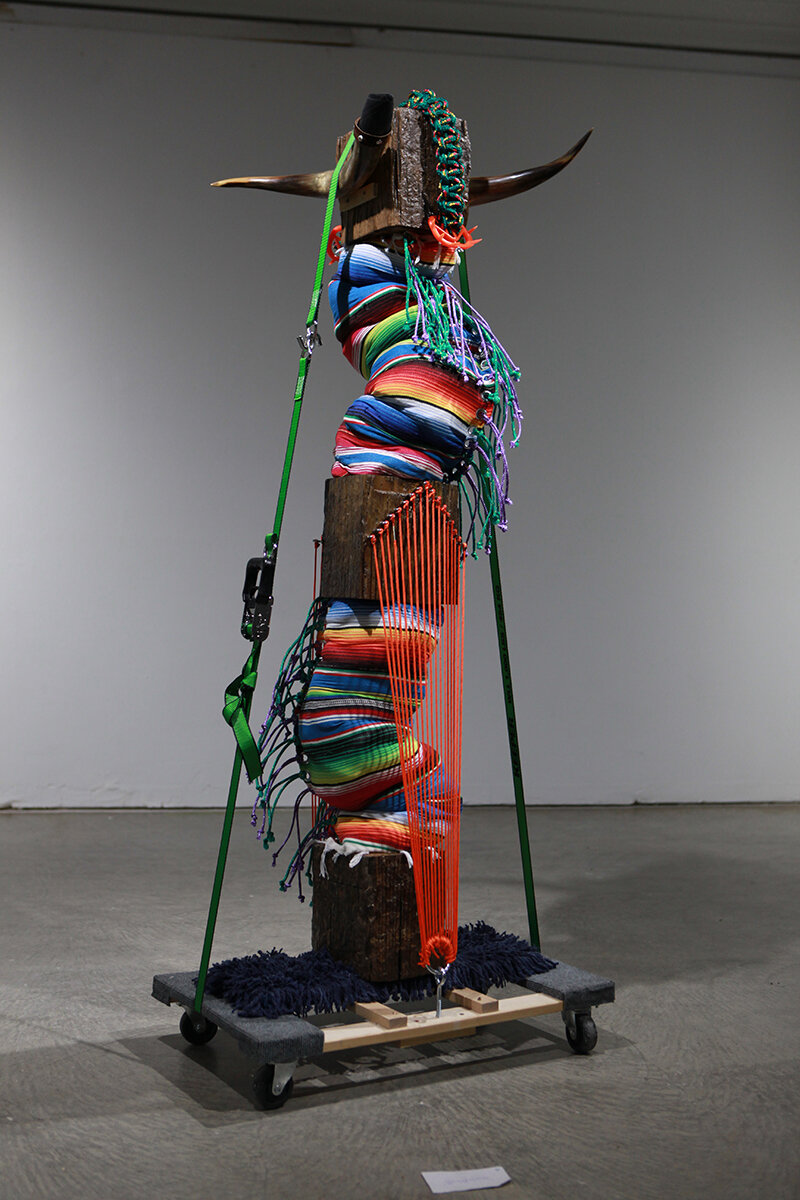October 9 - November 7, 2021
Opening Reception October 9th, 6-10pm. Masks Required.
Regular Hours Saturday & Sunday, 12-5pm.
Room 1

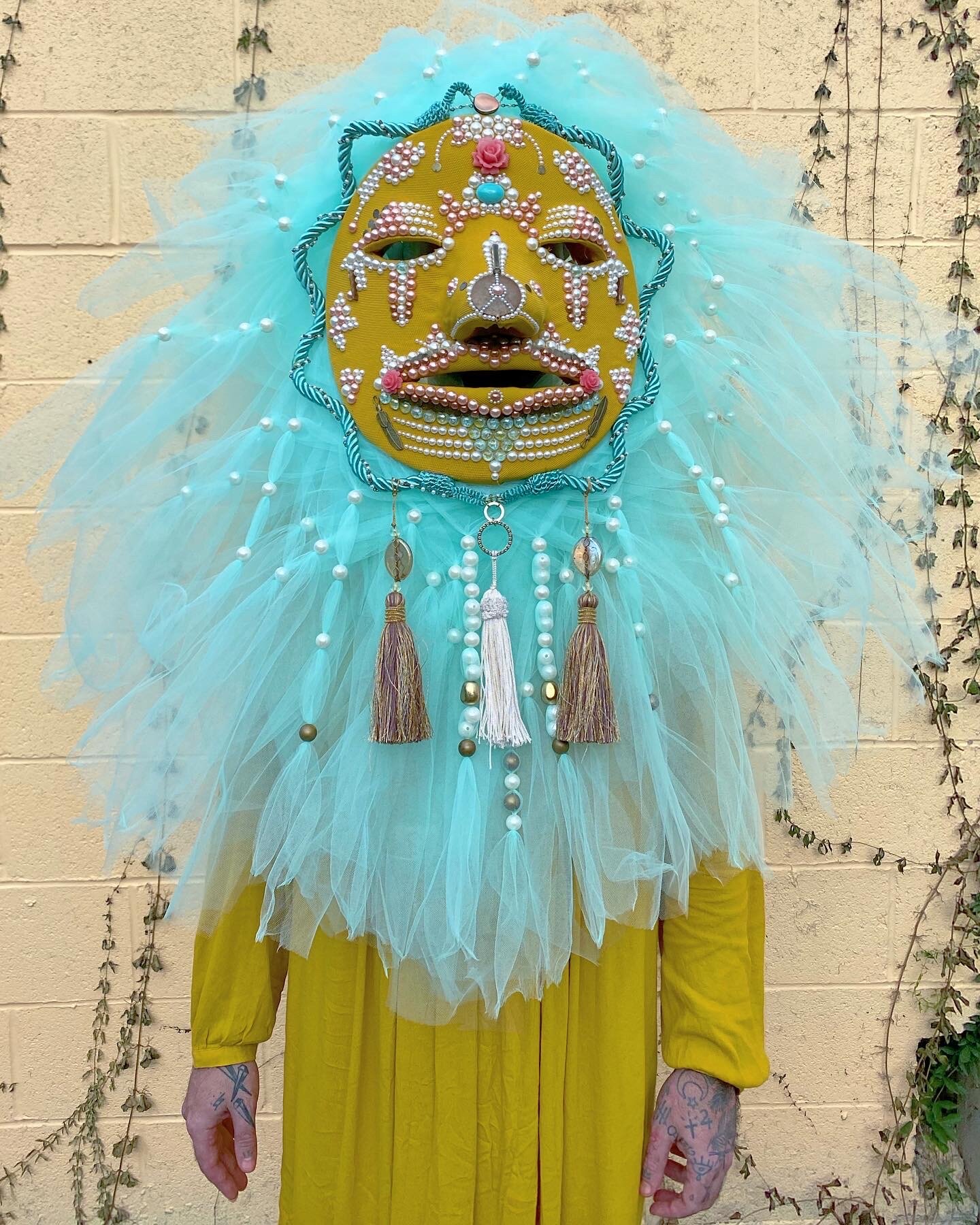
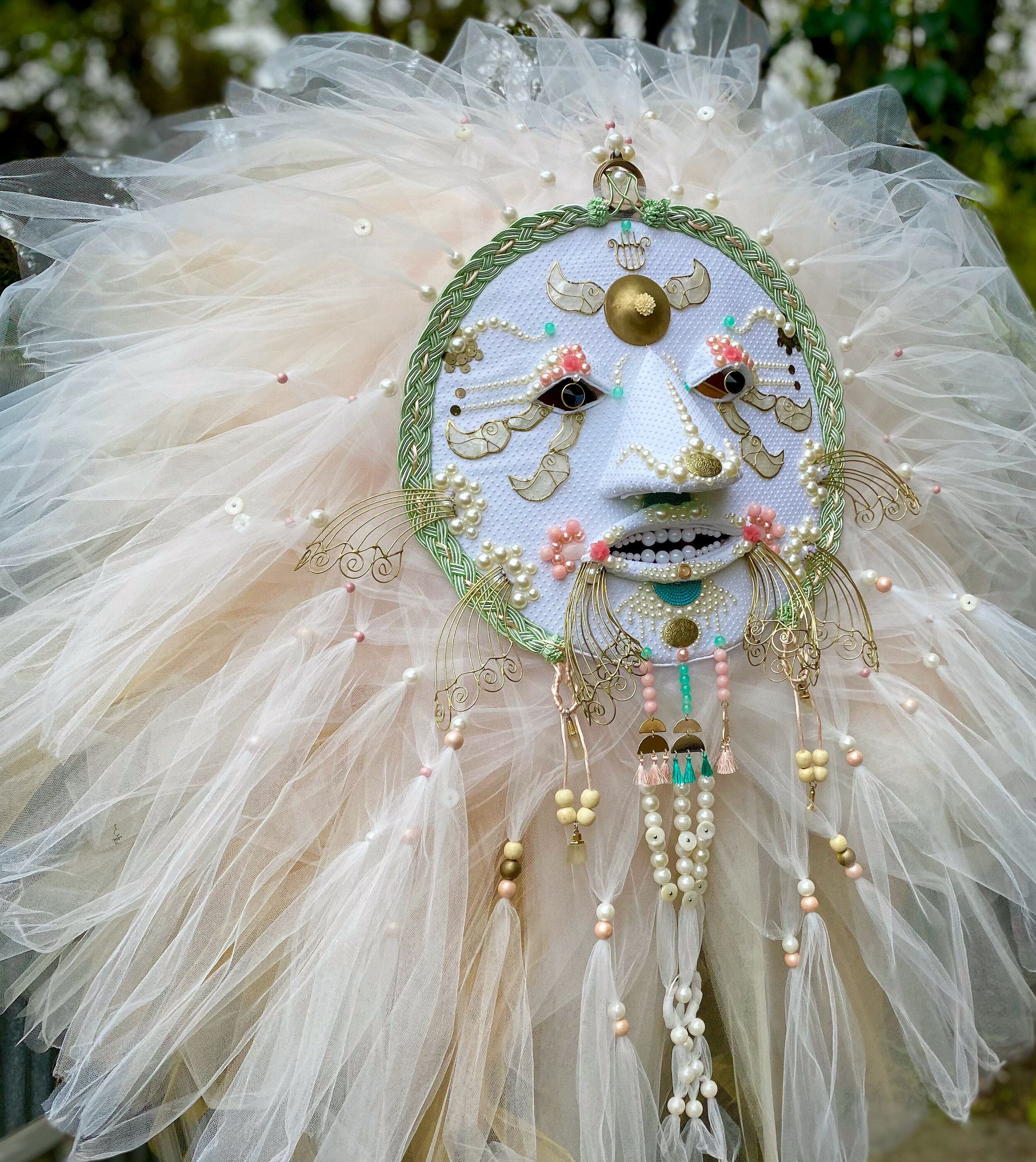
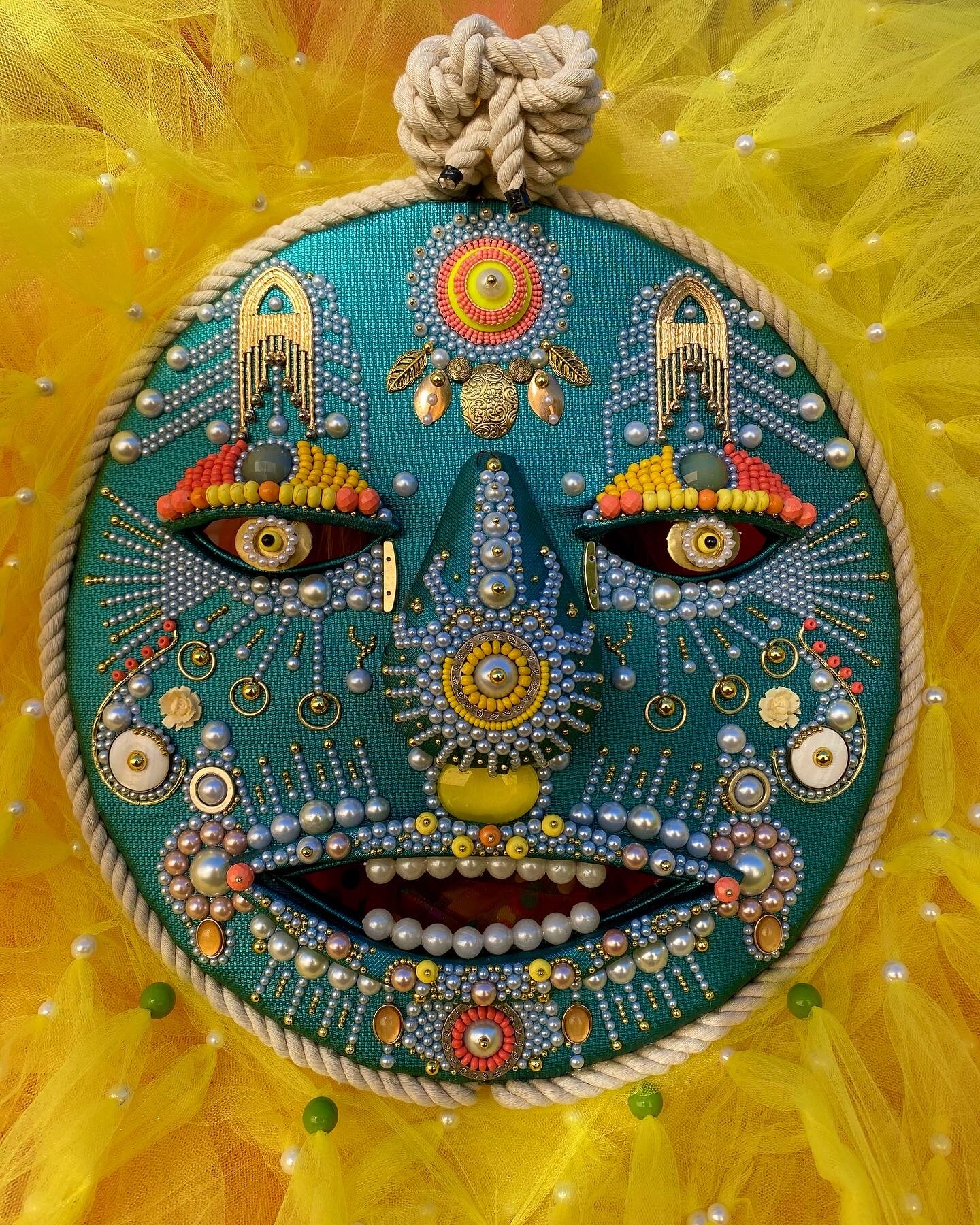
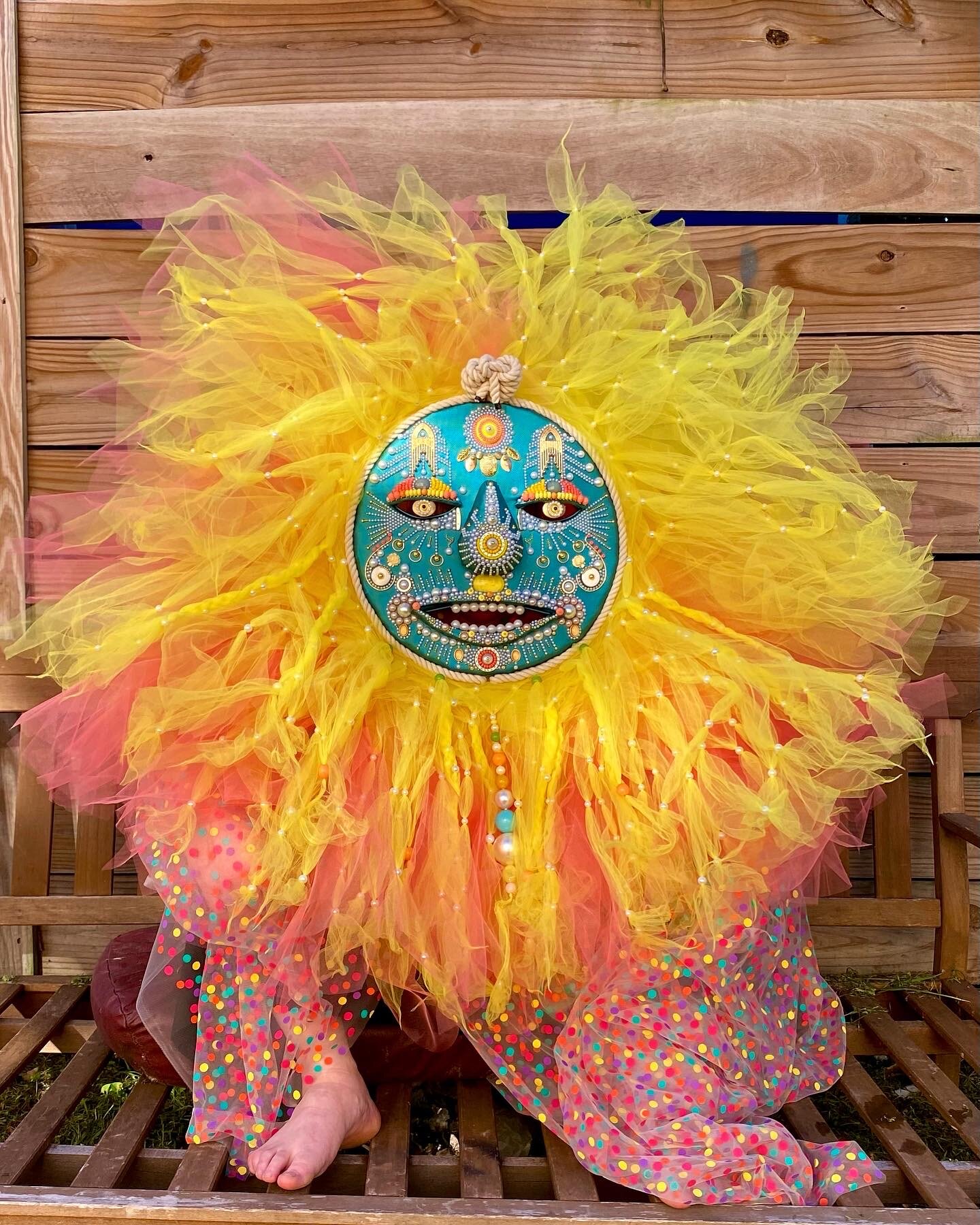
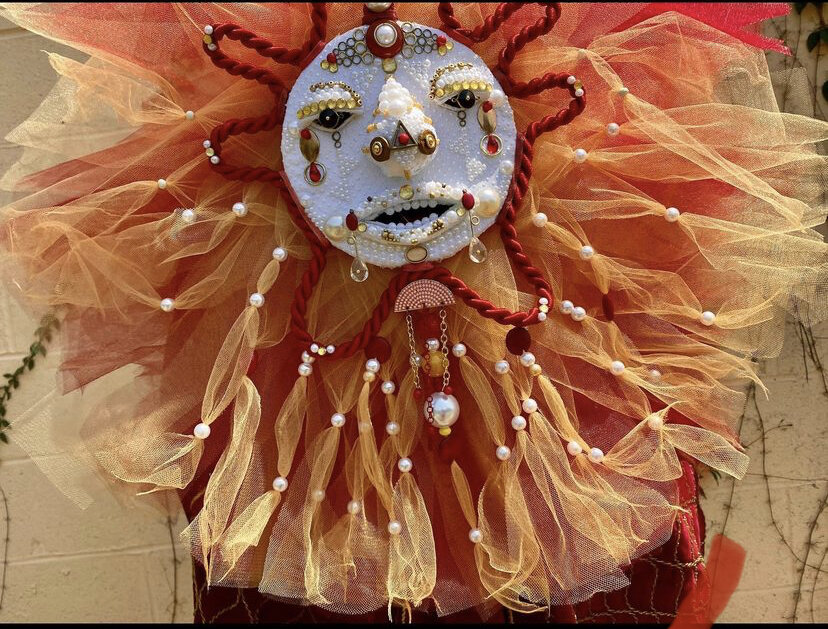
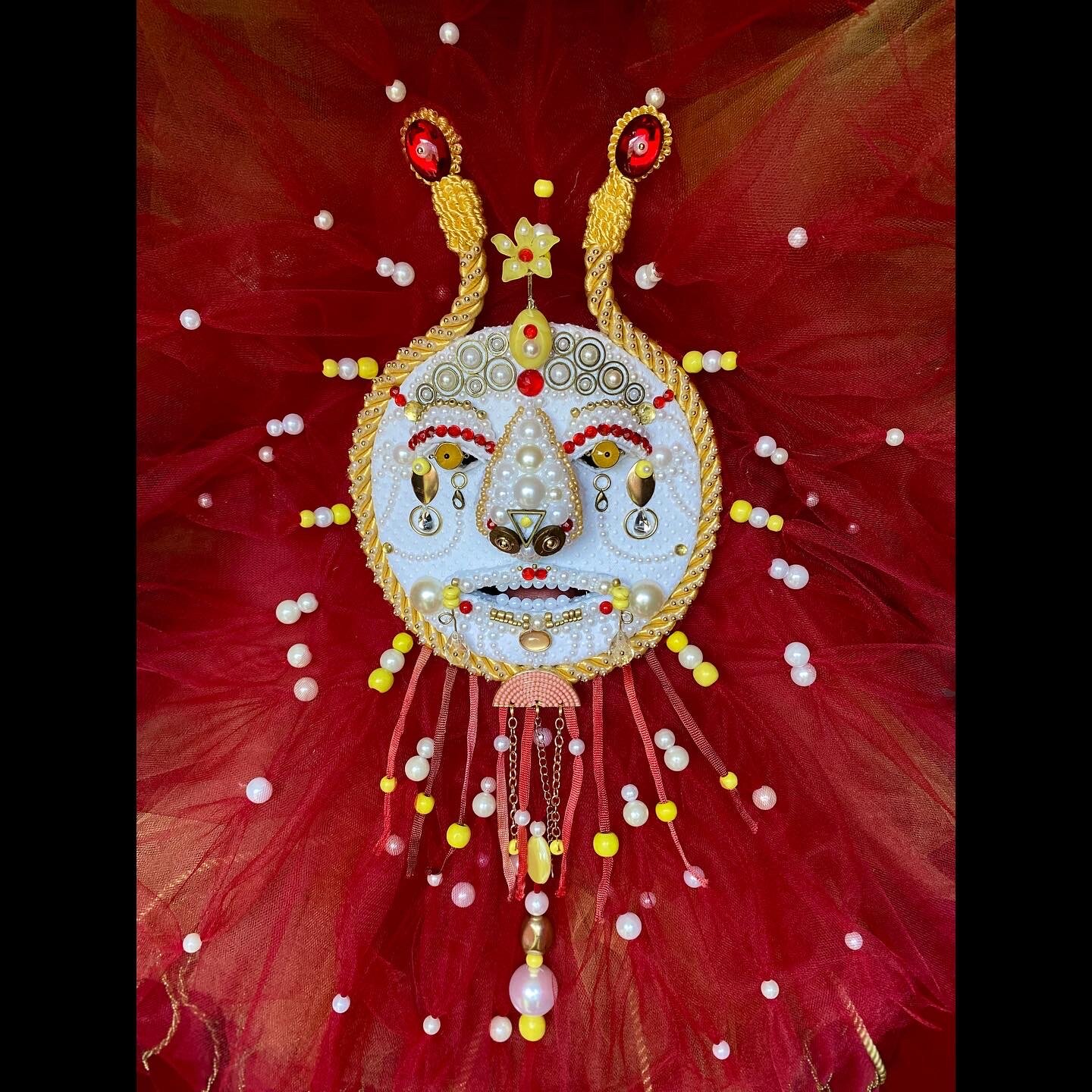
Basqo Bim, Déjà Entendu, Sculpture, 40 x 40 inches, 2020
Basqo Bim, Jarnidieu, Sculpture, 36 x 36 inches, 2020
Basqo Bim, Presque Vu, Sculpture, 44 x 44 inches, 2021
Basqo Bim, Jamais Vu, Sculpture, 44 x 44 inches, 2021
Basqo Bim, Fait Beau, Sculpture, 44 x 44 inches, 2021
Basqo Bim, Come See, Sculpture, 26 x 26 inches, 2021
Basqo Bim, Come Saw, Sculpture, 26 x 26 inches, 2021
Menjurje y Maranguango
Basqo Bim
The title "Menjurje y Maranguango" translates to "Mixture & Conconction." Within Colombian Spanish, a 'menjurje' is a disorganized mixture of diverse ingredients, and 'maranguango' is a drink brewed with medicinal / curative herbs, embodied with magical powers. Typically it is used to describe a love potion, and in some cases, a poisonous drink. These two words and their cultural baggage define the connection I feel with the works selected for this show, and best explain the intended visual and psychological impacts upon the viewer.
The displayed works come from a slow, yet frenzied period of time in my life, and it is reflected within each mask. Beginning with the last pre-coronavirus Carnival, the global pandemic itself, and a redefining of 'normal,' I found solace by taking a deep dive into these masks and creating a world with these characters. I pushed myself to increase the levels of intricacy and opulence within the visual aspect, and found ways to cut to the core of these characters within the context of story-telling and world-building. These characters are anachronistic and timeless, found in some hazy space between the almost-recognizable and the irreconcilably surreal, both visually and in character.
For example, Fait Beau, The Great Diviner - the magician, the psychedelic spiritual forest hermit, the one who others sojourn to for guidance, the alchemist, the bender of time and space - is at heart, The Trickster archetype. Playing with these existing archetypes, bound by millennia of human folklore and legend, I offer the viewer space and time to recognize the underlying familiarities with a warm appreciation. Simultaneously, the jarring and overwhelming visuals that accompany the lore push the viewer to redefine their own 'normal,' so to speak. Here they will find the familiar buried within the fantastic, and they will find a way to sort through the 'menjurje' while imbibing the 'maranguango.'
I was born in Greenwood, South Carolina in 1985, and have been living in New Orleans for the past few years. My family is Colombian - my parents immigrated to South Carolina forty years ago. I have been making art for six years, and I am self-taught. My brother was an artist, and he motivated me to take the leap. I began drawing, quickly moved to illustration, and then began learning embroidery and large-scale sculpture. After moving to New Orleans, I landed face-first into my obsession with masks and costumes. This is when I realized I'd found the art form that moves me.
My influences are derived from learned family culture, ritual objects, ceremonial masks, patterns from the natural world, religious attire, psychedelic visuals, and children's literature and television. I draw from the Russian Orthodox church, to "Where The Wild Things Are," to past experiences with hallucinogens. I view this present moment in my progress with art as a stepping stone to the next evolution of my work. I focus on making the things I want to see in the world: to bring life to my dreams and visions, to bring the inner-child to the forefront and let them explore, and to bring a stimulating experience to anyone who takes a moment to step in front of my work.
Room 2
Stephen Signa-Aviles, Demon, Packing Foil, artificial flowers, Dust Mop, Corn, Textiles, 2020
Stephen Signa-Aviles, Signal Finder, Concrete, steel, Piñata, corn, artificial turf, aluminum, textiles, 2020
Stephen Signa-Aviles, Encampment, Textiles, found objects, rope, plants, 2020
Stephen Signa-Aviles, Un-Becoming, Flag, facemask, wire, cardboard, corn, sergeant stripes, mop, shoes, 2021
Stephen Signa-Aviles, Northbound, Railroad tie, textiles, bull horns, dolly, straps, 2019
Stephen Signa-Aviles, Decorum, soccer cleats, hub cap, textiles, flag, wood, 2021
Place of Waiting
Stephen Signa-Aviles
The place of my ancestors is called Erongarícuaro in Michoacán, Mexico.
In the Purépecha language, erongarícuaro means ‘place of waiting’. As I consider this, I'm struck by how the name ties together place & time.
A place where one waits.
How might a 'place of waiting' look? Places that immediately come to mind might be airports, bus stops, train stations, hallways outside a classroom, or the waiting room in a doctor's office.
These are temporary environments marked by passage. They are places between where we have been and where we are going. They remind us that the thing we wait for is either on its way or we are on our way to it.
For me, a place of waiting is a place of simultaneous expectation and reflection.
With this work, I'm engaging in the practice of thinking through family history, mixed cultural experience, and the careening of identity in the context of constant change.
Through a process of collection, de-construction, and reassembly, I'm utilizing a conceptual strategy related to Abraham Cruzvillegas' autoconstrucción. This is a slow, often awkward practice that emphasizes a process of becoming. The work is in a state of perpetual incompleteness. It is messy and makes use of materials that many would dismiss or consider garbage.
I think of this work not just as a sculptural presence but also as a signal receiver. I want to have a conversation with history and contemporary realities. I want to interact with them, pull them apart, and put them back together. My aim is to simultaneously celebrate and discern while holding space for criticism and hopefulness.
Stephen Signa-Aviles is a Mexican American artist living in Urbana, IL with his wife and two daughters. By introducing the historical and economic context of family history, he seeks to reflect on personal narratives of living in between cultures. His sculptures are an assemblage of found and curated objects that foreground ambiguity as means of avoiding simple or reductive conclusions.
@signa.aviles
Room 3
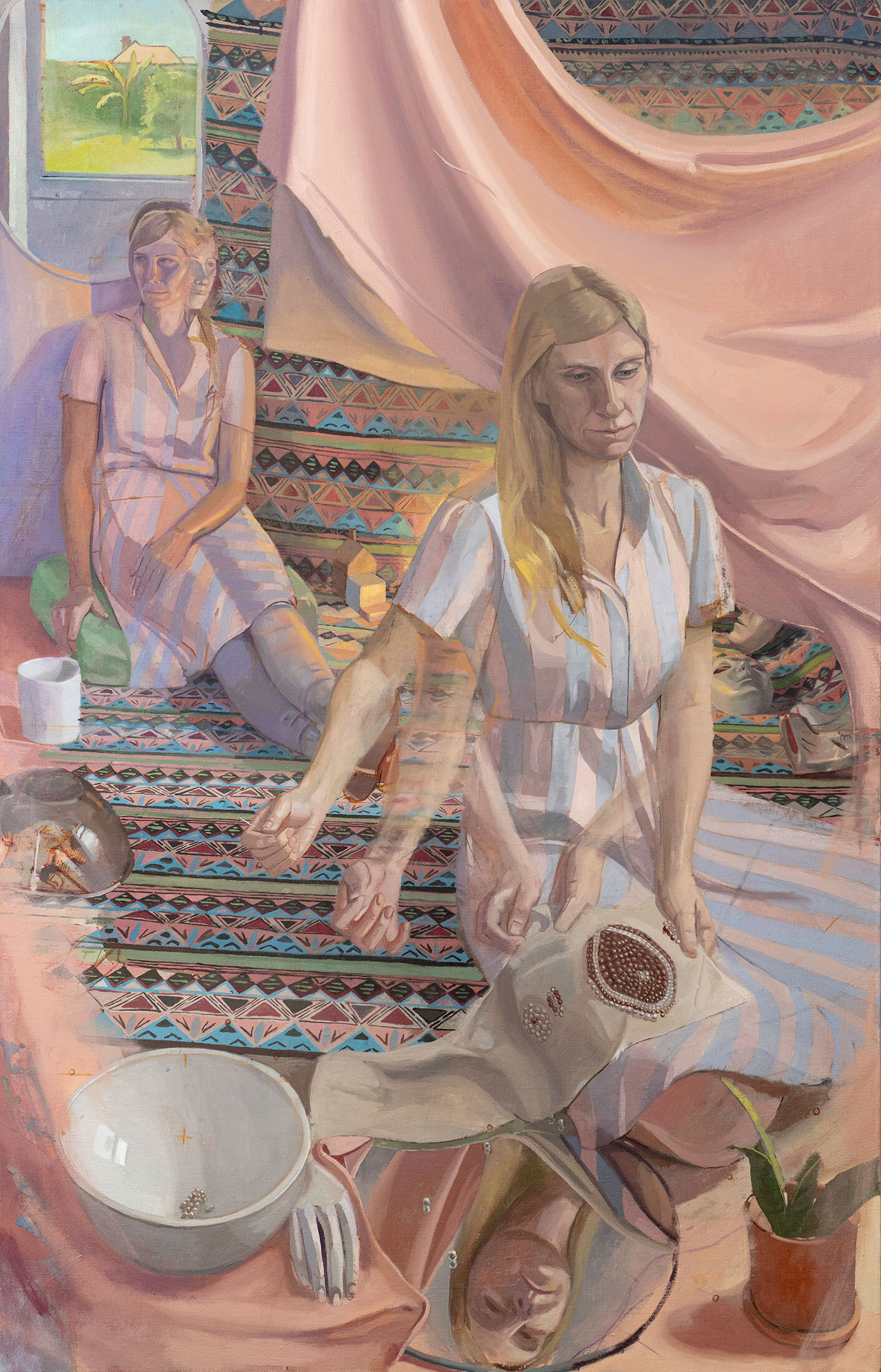

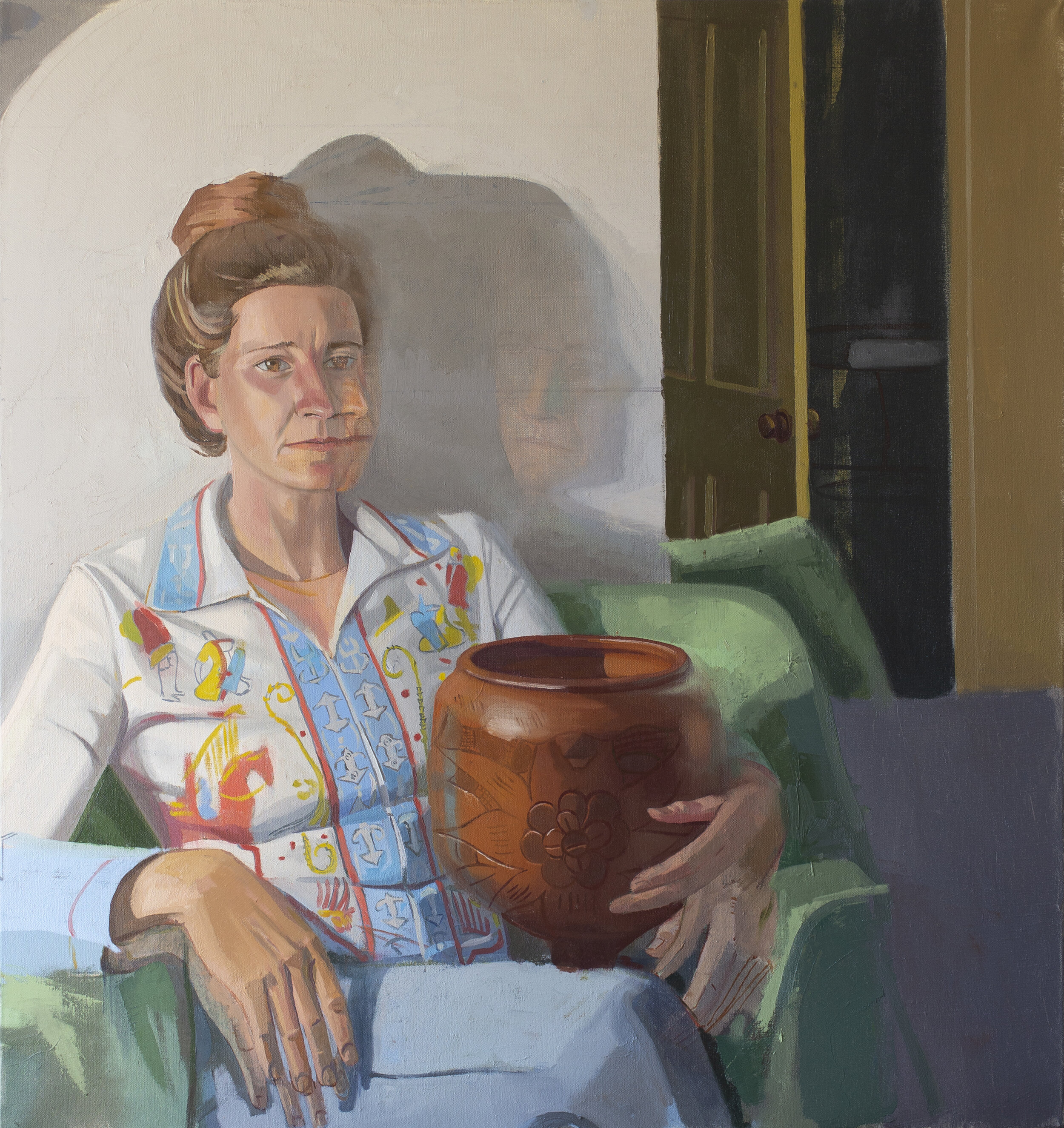
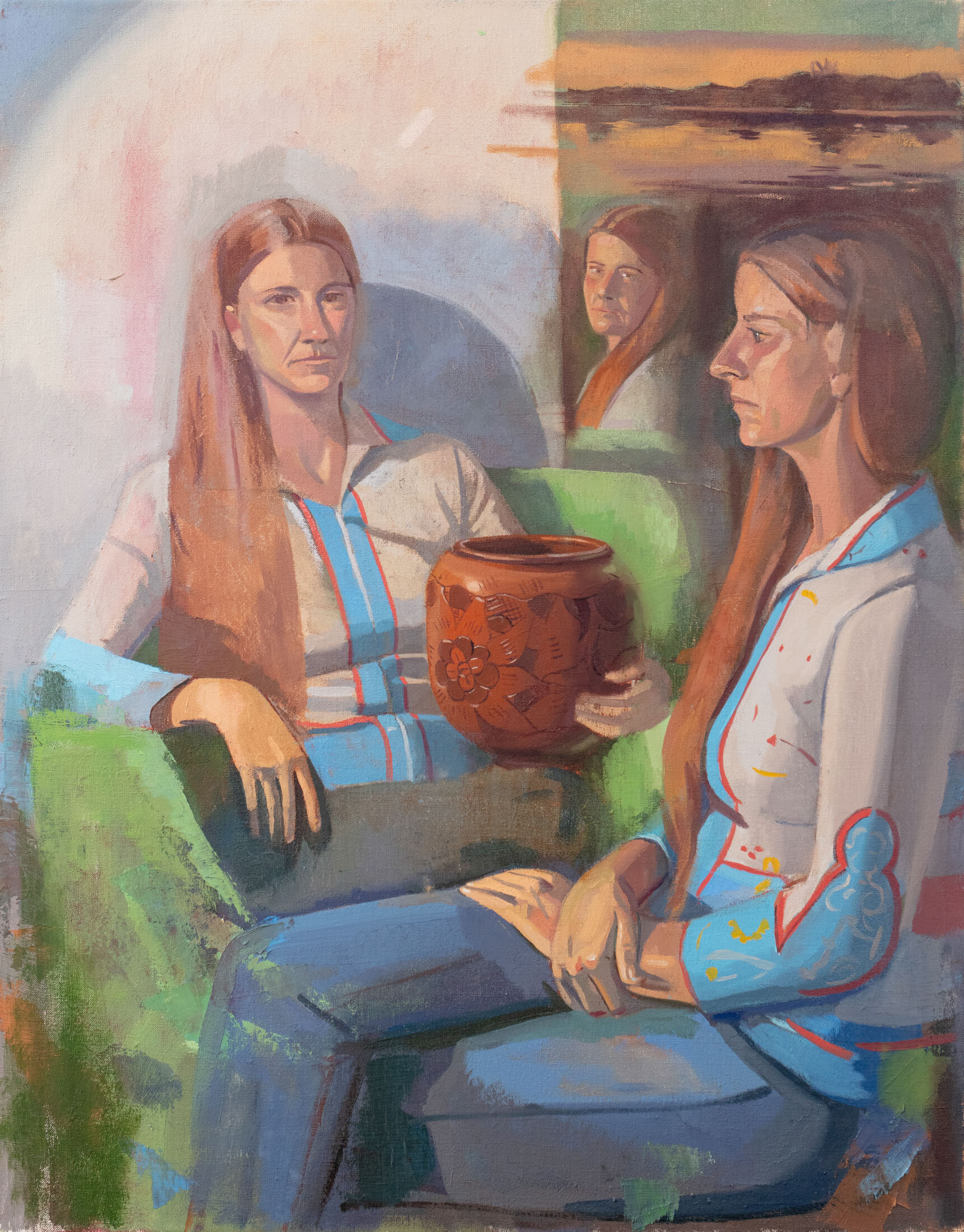
Tom Walton, DayDreamer, Oil On Linen, 36x57 in, 2021
Tom Walton, Viewing Shadows, Oil on Linen, 22x28 in, 2021
Tom Walton, Holding Life, Oil On Linen, 36x37 in, 2021
Tom Walton, Transferance, Oil On Linen, 22x28 in, 2021
There Might be Wasps Behind the Sun
Tom Walton
Over the last 18 months, my paintings have become about deeply exploring the unconscious and subconscious to better understand the human inner world. This time has both made my awareness more insular and more global simultaneously. These paintings explore the dream-like space between body, emotion, and culture. By researching the complex interrelationships of cohabitation, I have sought to reveal the ways my own emotions and empathy transform the character of the depicted space. Painting fewer people over longer periods of time prompted my curiosity into painting multiple aspects of a person in one picture. Through collaboration with my subjects. I intuitively explored depicting multiple versions of them in different parts of the space. This process unfolded over time into a daydream of symbology and form. I became interested in how multiple versions of a person in the same environment could express the complexity of an individual. In relating to them I felt I was recognizing a shared humanity, sensing the mysteries of the unconscious and at times a glimpse of our collective lived experience
Tom Walton, 41, was born in Oxford, United Kingdom. As an infant he relocated to Washington, DC. Beginning at age 16, he studied with the artist Carlo Pittore. Walton received his BFA from the Rhode Island School of Design in 2004 and his MFA from the Pennsylvania Academy of Art in 2007. In 2020 Walton had solo show of his paintings at Gross McCleaf Gallery in Philadelphia PA. He is a recent recipient of an Elizabeth Greenshields grant. In 2021 he was an artist in residence at the Joan Mitchell Foundation in New Orleans. He has a painting in the permanent collection of the Woodmere Museum located in Philadelphia PA. In 2018 he curated a National show of paintings titled “Real to not Real” at Southeastern Louisiana University where he is an Assistant Professor of Painting. His paintings have been published in INPA9 and the New American Paintings 154 Southern edition. Walton is married to the artist Laura Velez and lives in New Orleans.
www.tomwalton-studio.com
@thomas_g_walton
Room 4
Image is an outtake from Michel Varisco’s new series of underwater portraits.
Cynthia Scott, Sju, antique handmade lace, plastic lace, hydrocal, plaster, thread, metal, paint, 9.5” x 11” x 3”, 2021
Cynthia Scott, Åtta, antique handmade lace, plastic lace, plaster, metal, paint, 14” x 11” x 5,” 2021
Cynthia Scott, Nio (detail), antique handmade lace, 3D printed polymer lace, hydrocal, hydrostone, metal, paint, 14” x 14” x 5,” 2021
Inheritance
Cynthia Scott
In 2019 my mother suffered a bone-shattering injury while visiting Northern California, which prevented her from returning to her family’s Alabama home – ever. As the geographically closest child it fell to me to empty the home of four generations of stuff to prepare for its sale. It took me a year of weekly commutes (minus time out for early COVID lockdown) to accomplish this task.
My people were collectors of “stuff.” My mother and I are environmentalists, so taking any of it to the dump was not a possibility. From junk to antiques I painstakingly sorted and dispersed the inherited mishmash and attempted to direct it to people and charities who could best make use of it. There were some gems (my grandfather’s Italian birth certificate and a letter from the Archdiocese of the town granting him stewardship of a small hillside chapel) but mostly it was objects that, though interesting, had no useful place in my 21st century life. Sadly, objects that my forebears had treasured and considered important enough to leave for posterity had become a burden that choked me.
One collection I couldn’t bring myself to dispense with is my grandmother’s handmade lace. It reminded me that women of her era had few creative opportunities outside the home, so her art form was to crochet and tat* up a storm The incredible volume of material indicated she also collected work from other needlewomen. For me the beautiful lace came to symbolize everything our antecedents have bequeathed to us that are not only unwanted or unuseful but have actually become detrimental. No baby is born with prejudice, political or religious beliefs, hatred or “isms” of any kind. These have all been handed down to us.
In this work I have stiffened the antique lace into intractable forms. Inclusions of contemporary plastic lace facsimiles suggest the harmful misbeliefs we may still harbor that contribute to our present disharmony.
*Tatting is an extremely fine lace made of intricate knots using a special type of hand shuttle. It originated in Europe and is not widely practiced today.
Cynthia Scott followed a BFA in Sculpture from RISD with stints as an actress (Aliens) and singer (Virgin 10 Records) in New York, London and Los Angeles – eventually establishing a home and art studio in New Orleans. She received her MFA in Studio Art from Tulane University in 2008.
Scott is the recipient of several public art commissions, an Artist Fellowship, and numerous grants from Louisiana Division of the Arts, Louisiana Cultural Economy Foundation, the Contemporary Arts Center’s SweetArts Fund, and Transforma Projects. She has exhibited in London, Edinburgh, Mexico City, New York, Los Angeles, Houston, and other cities across the United States. Her work is included in the permanent collections of the Louisiana State Museum, New Orleans Museum of Art, and Newcomb Art Museum. From 2009 to 2011 she established and coordinated Current:NOLA, a discussion group/think tank of artists and writers engaged in raising the national and international profile of contemporary New Orleans visual art through dialogue, promotion, and critical writing.
Scott’s approach to sculpture combines recycled materials with handmade elements and historical/cultural/sociopolitical references.
